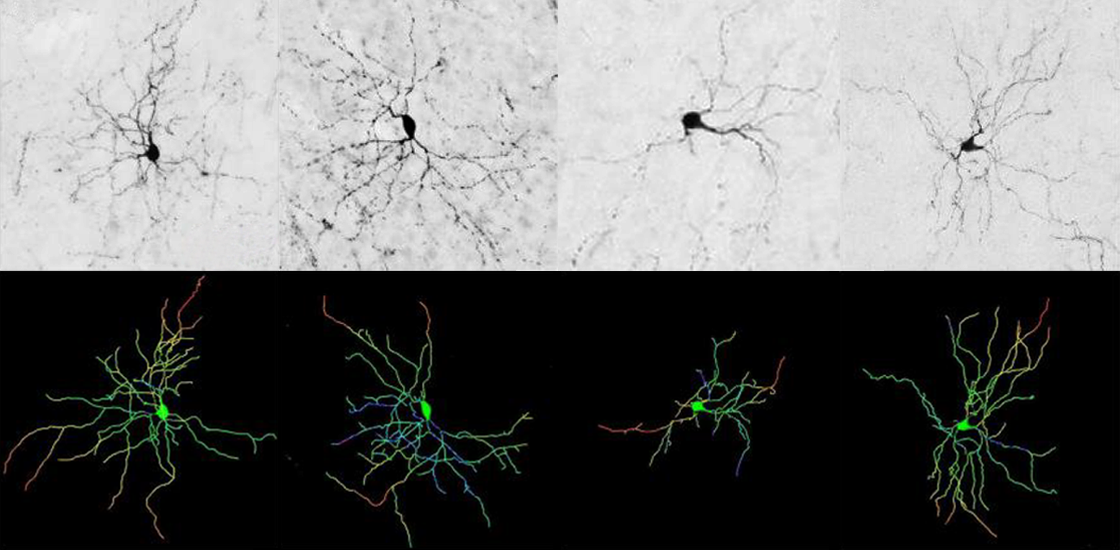Mutations in FOXP2, a gene linked to language and autism, may impair speech by increasing the levels of motor proteins in striatal neurons, according to a new study in mice.
The motor proteins, called dynactins, act as “trucks” that transport molecules neurons need to grow dendrites, says lead investigator Fu-Chin Liu, professor at the Institute of Neuroscience at the National Yang Ming Chiao Tung University in Taipei, Taiwan. The study shows that an overabundance of the motor proteins hinders dendrite growth in the striatum, an area deep in the brain that plays a role in language processing and cognition, among other functions.
The findings suggest that the motor proteins are “potentially causal” for speech and language problems in people with FOXP2 mutations, says study investigator Ann Graybiel, professor of brain and cognitive sciences at the Massachusetts Institute of Technology.
“It blew me away,” Graybiel says. “Protein motors moving around little things inside cells in the striatum and you have a problem with hitting words? This is a stretch from one domain of knowledge to a very different domain.”
T
he mice carry a mutation found in 15 related people, all of whom have language and speech disorders and reduced gray matter in several brain areas, including a part of the striatum called the caudate nucleus.As pups, the model mice don’t call out for their mothers as frequently as wildtype mouse pups do. Striatal neurons from the FOXP2 mice grow more slowly than those from wildtype mice, previous studies have found. Vesicles carrying neurotrophic factors also move sluggishly and cover less distance in neurons from the model mice than in those from wildtype mice, according to the new study.
The proportions of the three major components that make up dynactins are altered in the FOXP2 neurons compared with wildtype neurons, the researchers found.
Knocking down DCTN1, the gene that codes for the largest dynactin component, normalizes the vocalizations in the FOXP2 mice. It also increases the distance the vesicles travel in striatal neurons and bolsters neurite length and branch growth, the researchers found. The findings were published in Brain in May.
The results demonstrate that FOXP2 is responsible for regulating the balance of motor proteins, says Eric Jarvis, professor of neuroscience and genomics at Rockefeller University in New York City, who was not involved in the work. “You have to have the right amount of protein to have proper dendritic functions in your striatum for vocal behavior.”
The findings help “fill the gaps” in understanding how FOXP2 contributes to autism and other neurodevelopmental conditions, says Karun Singh, senior scientist at the Krembil Research Institute in Toronto, Canada, who was not involved in the work. “This is a very good study.”
Because FOXP2 is a transcription factor that regulates the expression of many genes beyond DCTN1, the dynactin mechanism is “probably part of the story, but not the whole story,” Singh adds.





